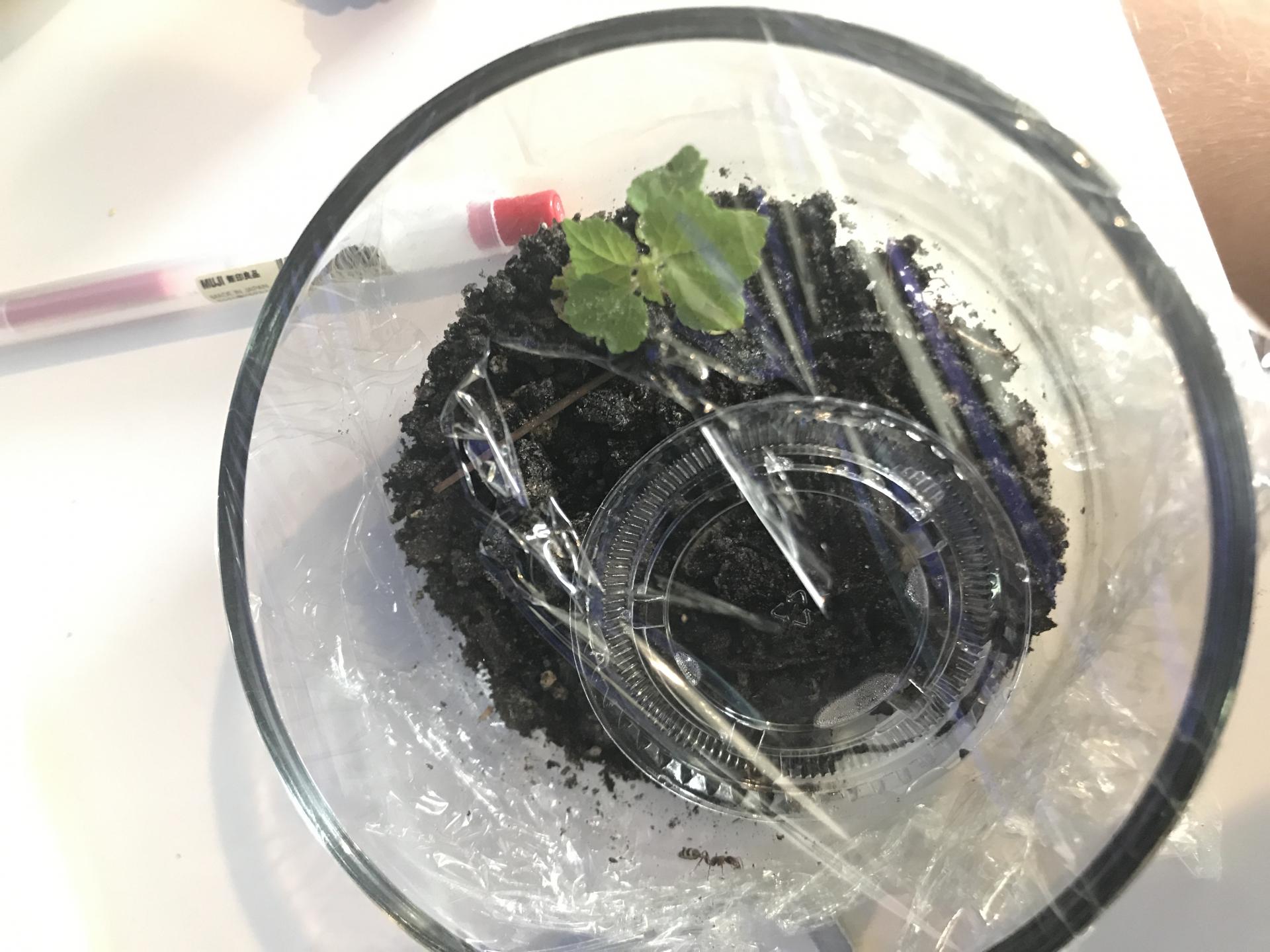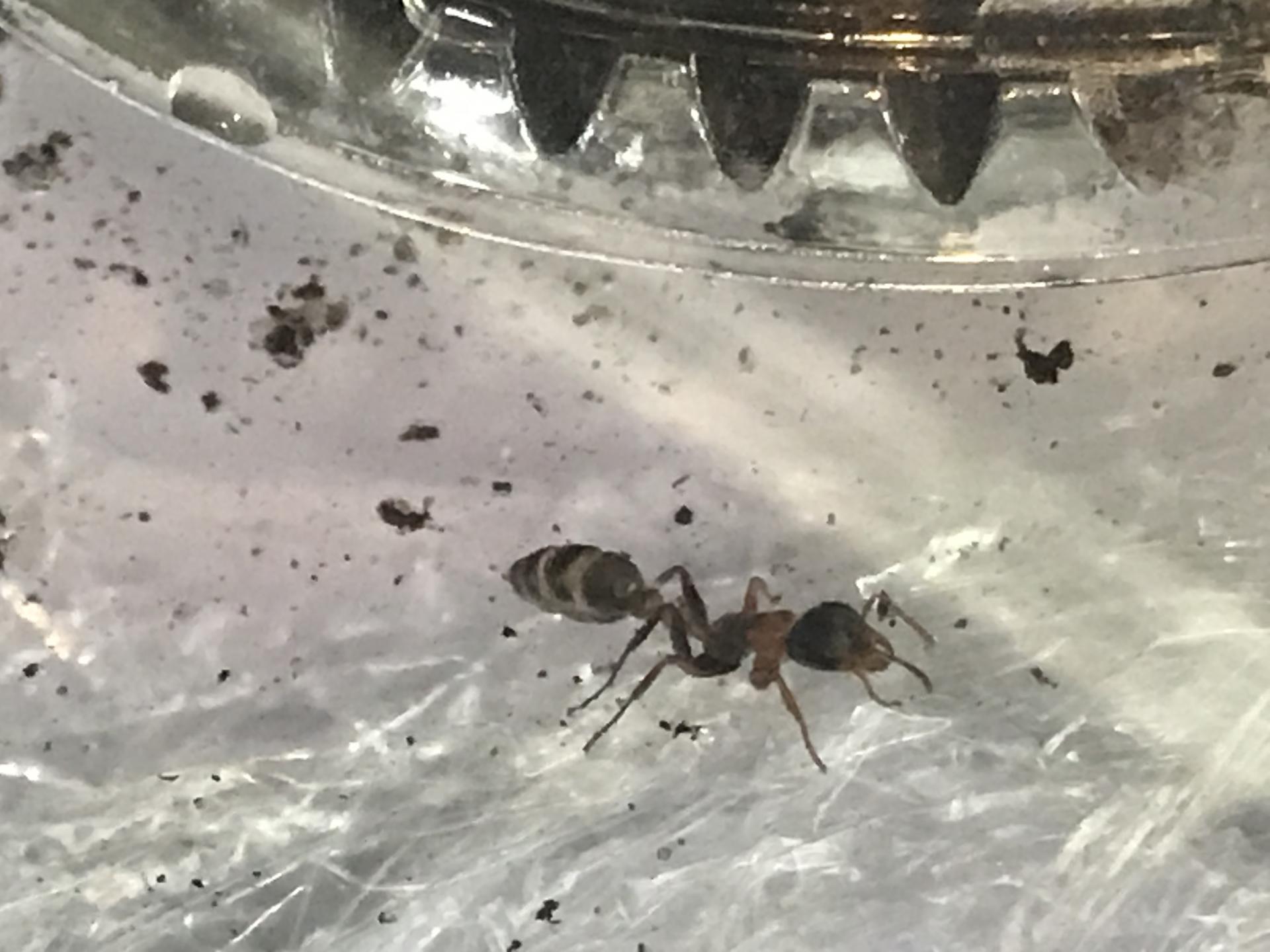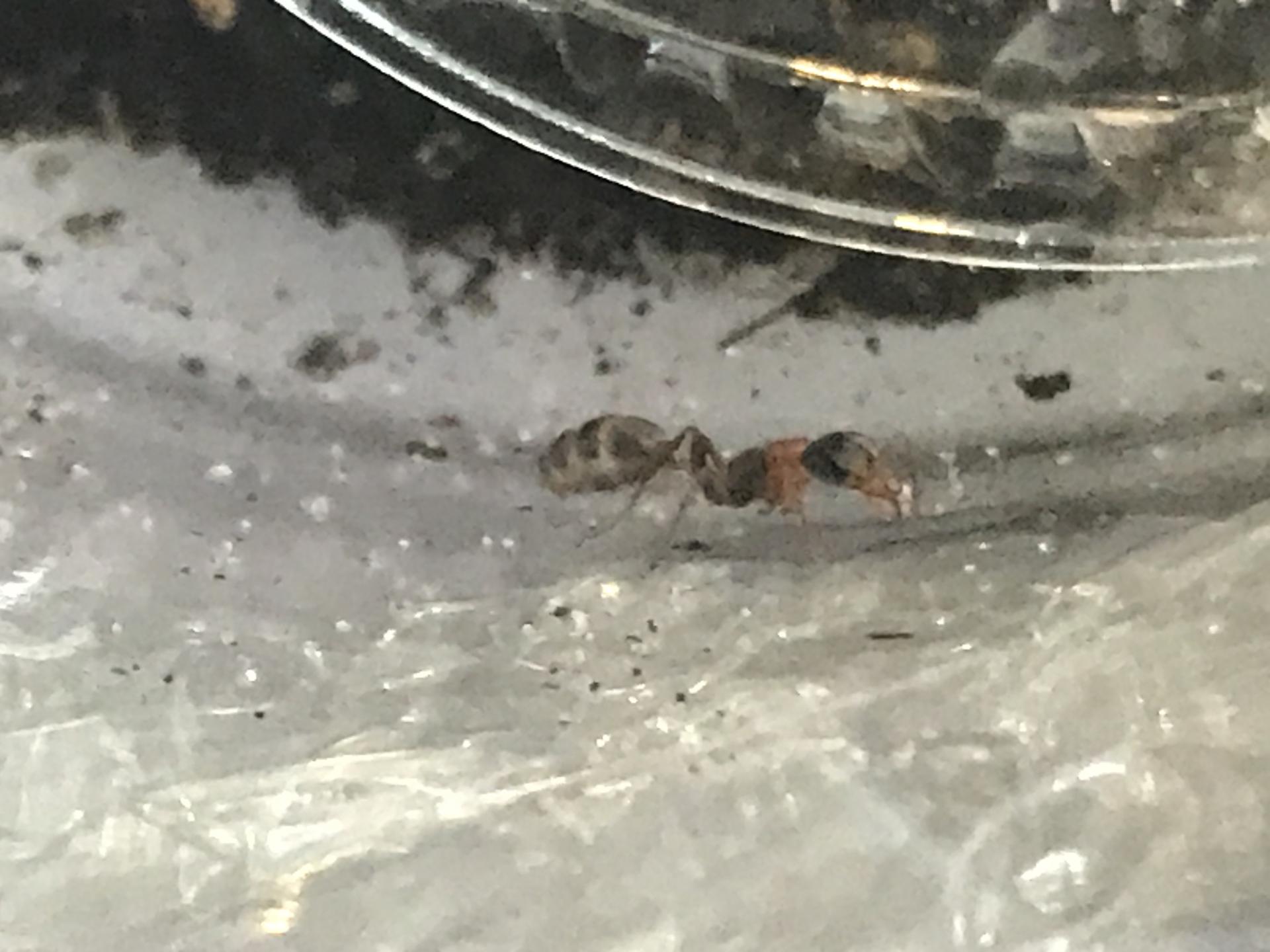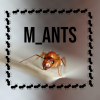Pseudomyrmex gracilis
Pseudomyrmex gracilis is a widespread new-world ant species native to South and Central America and introduced to the southeast U.S. Over the last couple of decades, it has shown rapid spread throughout the south, displacing other common twig-nesting ants like Colobopsis, Cephalotes, and native Pseudomyrmex species. They are now easily the most common twig-nesting ant here.
In the past I haven't really attempted to capture P. gracilis colonies despite how easy it is, but I have been trying over the last few months. I've had great difficulty in finding colonies with queens because I almost always just find satellite nests of large colonies. A few days ago I was breaking open dead greenbrier vines (Smilax sp.) and found a nice little colony, complete with a fat queen and lots of brood. The queen is missing a leg but it doesn't affect her much. I've given them some sugar water and Drosophila melanogaster fruit flies.

I made an outworld for them with sand at the bottom and laid some twigs around the outworld so they can get around better. They're awkward walking on sand.

Connected a test tube to their outworld and they moved into it rather quickly, to my surprise.




I stole three pupae from that colony to give to my the P. gracilis queen I found a few days before I caught the colony. Her first worker will eclose soon.

Edited by Aaron567, October 12 2019 - 4:49 PM.































